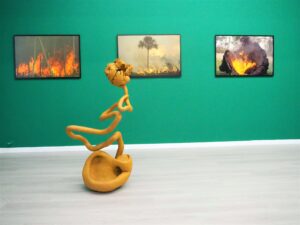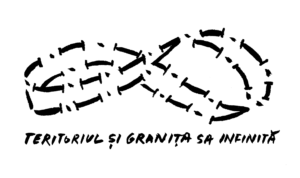The third issue of ARTSENS includes a number of interesting articles about the exhibitions of the Art Encounters Biennial, to which it wants to be an introduction, a useful instrument for those interested in what is happening in Timisoara this autumn.
Today, if you want to see a work of art, you no longer have to go to a museum. Just going to buy bread from the nearest grocery may be enough. This is because the art world is increasingly interested in moving art from institutions to public spaces and highlighting the artistic expressions that a public space can produce in turn.
BASCA
by Andreea Dumitrescu
Basca Theatre is a true example of theatre for everybody. By facilitating the access of people having physical disabilities and belonging to disadvantaged groups, its members contribute to the development of a healthy society based on support, coexistence and acceptance.
FABER – The Capacity Building – is a cultural centre born from the desire to build a space for cooperation, which aims to facilitate the development of the creative and cultural environment in Romania, especially in Banat.
The built environment interacts with our mood and feelings, defining the atmosphere and our relationship with the city and its other inhabitants. What surrounds us is important to us as individuals because of the emotional load we tend to give to the spaces around us.
Statistically, almost 50 per cent of Romanians practice urban agriculture in their balcony – the favourite choice; 14 per cent use the plots around their block of flats; 8 per cent cultivate land on the outskirts of the city, while the remaining 28% use plots outside the urban perimeter.
Site-specific art can be defined in different ways, but all the definitions will have one thing in common: they will say that it is a type of art created especially for a certain location.
Suzanne Husky is a French-American artist born in Bazas, France in 1975. Her artistic approach questions and analyses man’s relationship with nature from prehistoric times to the present. With a background in horticulture, permaculture and herbalism, Husky is a multimedia artist focused on the dynamic connection between man and the environment.
As an architect, I also have more technical, more accurate training. The difficulty I encountered along the way was that I was in a hurry to provide concrete variants and consider the constructive aspects, while Suzanne always asked questions about the compliance with the principles from which we started.
Some critics believe that public art is a Moebius strip of postmodernity, as it allows a direct dialogue between the artist and the public, at the same time creating a close interdependence between them.
Works of art in public space can be forms of creative expression that use a common space. They can be temporary or permanent, made with or without permission. Artistic interventions are often anonymous and independent and highlight certain moments or situations, customizing places and spatial fragments.










